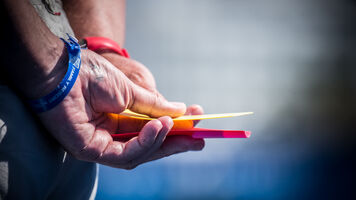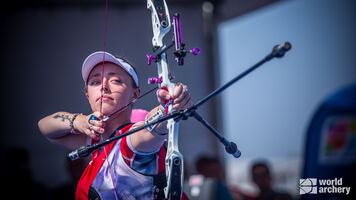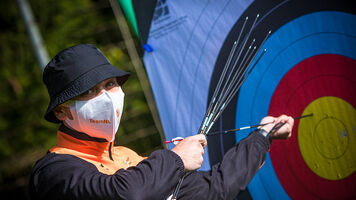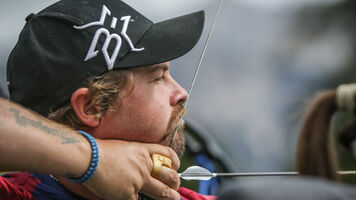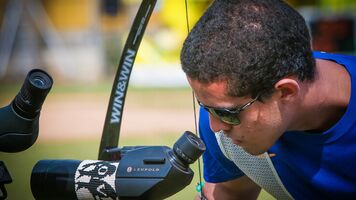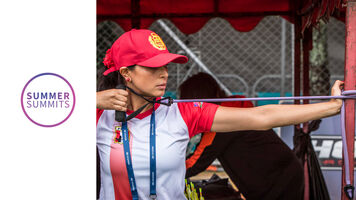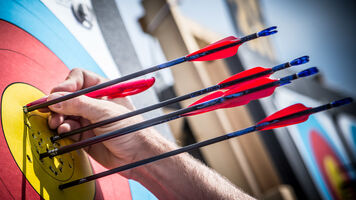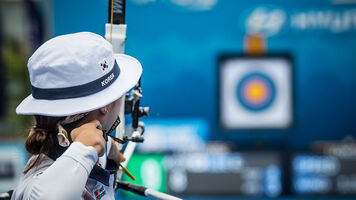Beginners’ guide to archery at the Wroclaw 2017 World Games
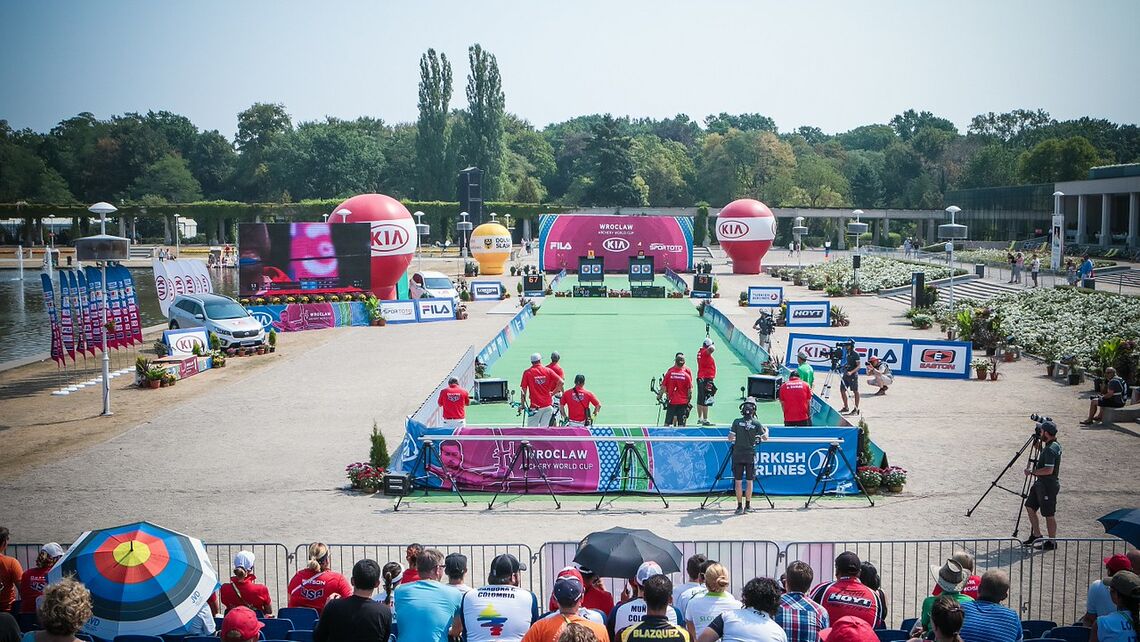
Field archery for recurve and barebow archers was introduced to the World Games in 1985 in London. The compound discipline was added in 1993 before switching from field to target in 2013.
The 2017 edition of the World Games will include recurve and barebow field archery competitions and a 50-metre target archery event for compound athletes.
Factsheet: target archery
- Venue: AWF Witelona (qualification), Centennial Hall (finals)
- Dates: 29-30 July
- Number of athletes: 48 (24 men, 24 women)
- Number of medals: 3 (compound men, compound women, compound mixed team)
- Defending Champions: Reo Wilde, USA; Erika Jones, USA; USA
Factsheet: field archery
- Venue: Szczytnicki Park
- Dates: 23-28 July
- Number of athletes: 48 (12 per category)
- Number of medals: 4 (recurve men, recurve women, barebow men, barebow women)
- Defending Champions: Jean-Charles Valladont, France; Naomi Folkard, Great Britain; Giuseppe Seimandi, Italy; Lina Bjorklund, Sweden
Three facts
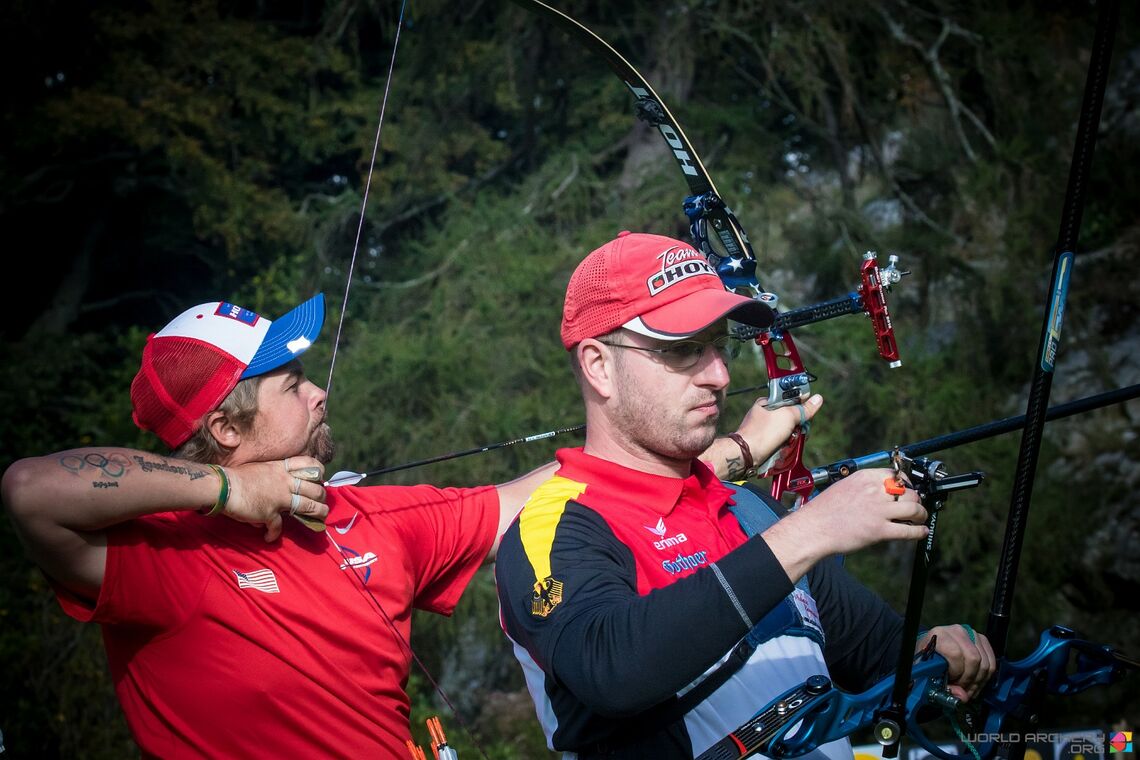
1) Although Brady Ellison has taken gold at the last two editions of the World Archery Field Championships, he has not yet won gold at the World Games.
2) The world record holders for the compound 15-arrow match are both competing in Wroclaw. Reo Wilde set the men’s record at 150 out of a possible 150 points with 12 arrows in the inner X10-ring in May 2015. Sara Lopez’s women’s record is 150 10X.
3) Defending Hyundai Archery World Cup Final Champion Mike Schloesser is having a stellar season. Averaging a monstrous 9.8 points per arrow over his career, the Dutchman is up to 9.84 points per shot in 2017. It’s about 0.015 more than his closest rival, world-number-one-ranked Dane Stephan Hansen.
Schedule
23 July: Recurve qualification
24 July: Recurve elimination
25 July: Recurve finals
26 July: Barebow qualification
27 July: Barebow elimination
28 July: Barebow finals
29 July: Compound qualification and elimination
3o July: Compound finals
Equipment
Compound: A bow invented in the 1960s that uses a levering system of cables and pulleys to efficiently impart energy from bent limbs to an arrow upon release, which can then travel at speeds of over 250kph.
Inherently more accurate that traditional equipment, compound bows are lighter to hold at full draw and athletes are permitted to use magnifying lenses in their sights, levelling bubbles and mechanical release aids.
Recurve: The modern evolution of traditional bows that have been used around the world for 1000s of years. The limbs curve away from the archer at the top, giving the “re-curve” its name.
An archer holds the riser, in the grip, and draws the string back to their face, placing their hand under their chin, using a finger tab to protect their fingers from the string. He or she aims at the target using a front sight.
The arrow, sitting on a rest attached to the riser, is propelled at speeds of over 200kph when the archer releases the string.
Barebow: Similar in equipment to the recurve discipline, barebow archers are not permitted to use sights, excessive weights, dampers or stabilisers. They may use modern carbon and aluminium arrows, modern bows and rests.
Most make use of a technique called ‘string walking’, which entails moving the draw hand up and down the string at different distance while aiming with the point of an arrow.
How it works
Target archery: Athletes competing in the target archery event at the World Games use a compound bow to propel arrows towards a target set 50 metres away. The targets measure 48cm in diameter and have six concentric scoring rings, separated into three colours.
The inner colour, the gold, scores 10 or nine points. (The 10 measures 8cm in diameter.) The red scores eight or seven points, and blue six or five points.
Athletes shoot 72 arrows, in ends of six, in the ranking round. The total scores are used to rank the athletes from one to 24 and give a seeding for the knock-out brackets.
Individual elimination matches see two athletes shoot against one another, with the loser leaving the competition and the winner advancing to the next phase. The phases progress until two athletes remain to contest the gold final. The two semifinal losers compete for the bronze medal.
Individual matches are decided using cumulative scoring. Each athlete shoots 15 arrows, in five ends of three. The athlete with the highest total score at the end wins the match.
Athletes have 20 seconds to shoot each arrow, and shoot alternately, with the highest-seeded archer deciding who shoots first in the first end. The archer with the lowest total score shoots first in subsequent sets. If the athletes are tied on score, it reverts to the original shooting order.
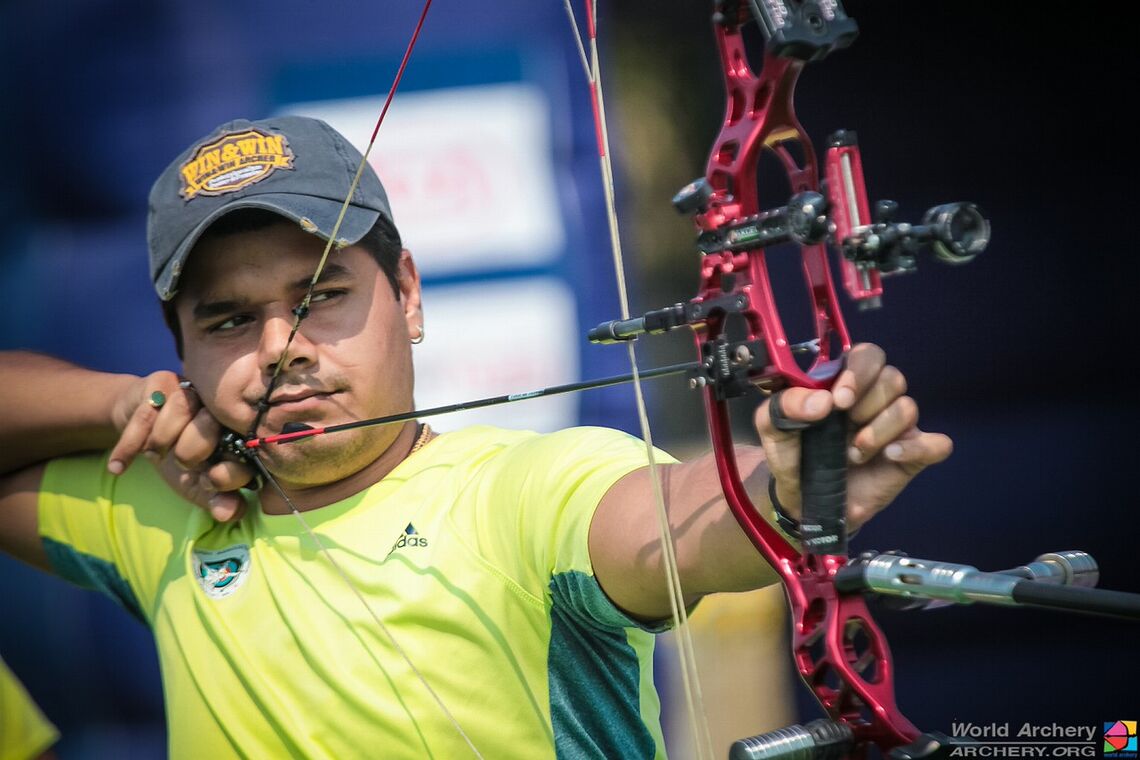
If there is a tie on score after 15 arrows, each athlete shoots a single arrow. The athlete whose arrow lands closest to the middle wins the match.
Each mixed team consists of two athletes, one man and one woman, from the same nation. Mixed teams are seeding for the knock-out brackets using the combined total of the two athletes’ individual ranking round scores.
Mixed team matches are also decided using cumulative scoring but over a total of 16 arrows, in four ends of four. The mixed team with the highest total score at the end wins the match.
Pairs have 80 seconds to shoot each end of four arrows, split into a rotation of two per mixed team. The procedure for choosing which team shoots first is the same as individual competition.
If there is a tie on score after 16 arrows, each athlete shoots a single arrow. The mixed team with the highest score for their two arrows wins the match. If the two pairs are tied on score, the mixed team with an arrow closest to the middle wins the match. If still tied, the second-closest arrows are compared.
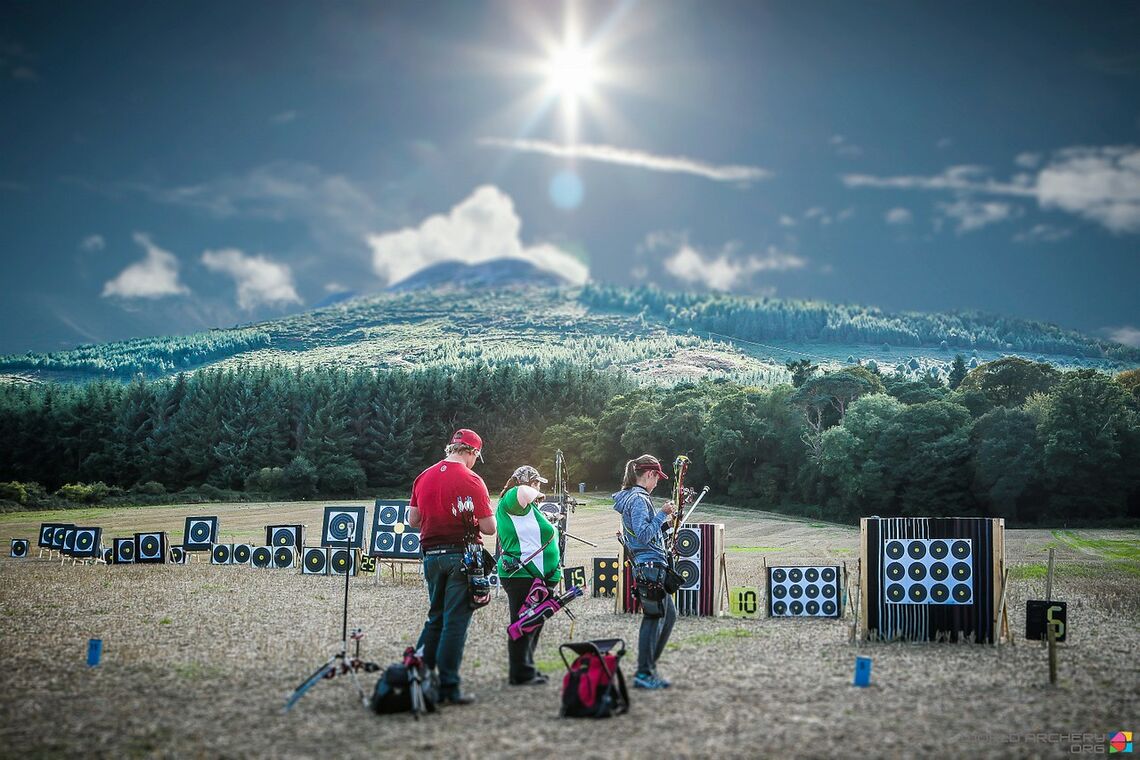
Field archery: Athletes competing in the field archery event at the World Games use either a recurve bow or barebow to propel arrows towards targets set around a course (much like golf) between five and 60 metres away. The targets measure between 20 and 80cm in diameter and have six concentric scoring rings, separated into two colours.
The inner colour, the gold, scores six or five points. The black scores four, three, two or one points.
Athletes shoot a 72-arrow qualification round on 24 targets, first 12 unmarked targets followed by 12 marked targets, shooting three arrows per target. The total scores are use to rank the athletes from one to 12. Seeds 3, 6, 7, 10 and 11 are assigned to Pool A. Seeds 4, 5, 8, 9 and 12 are assigned to Pool B.
The top two seeds are guaranteed a place in the semifinals, and shoot a match to determine who wins the right to decide which pool winner to shoot their semifinal against.
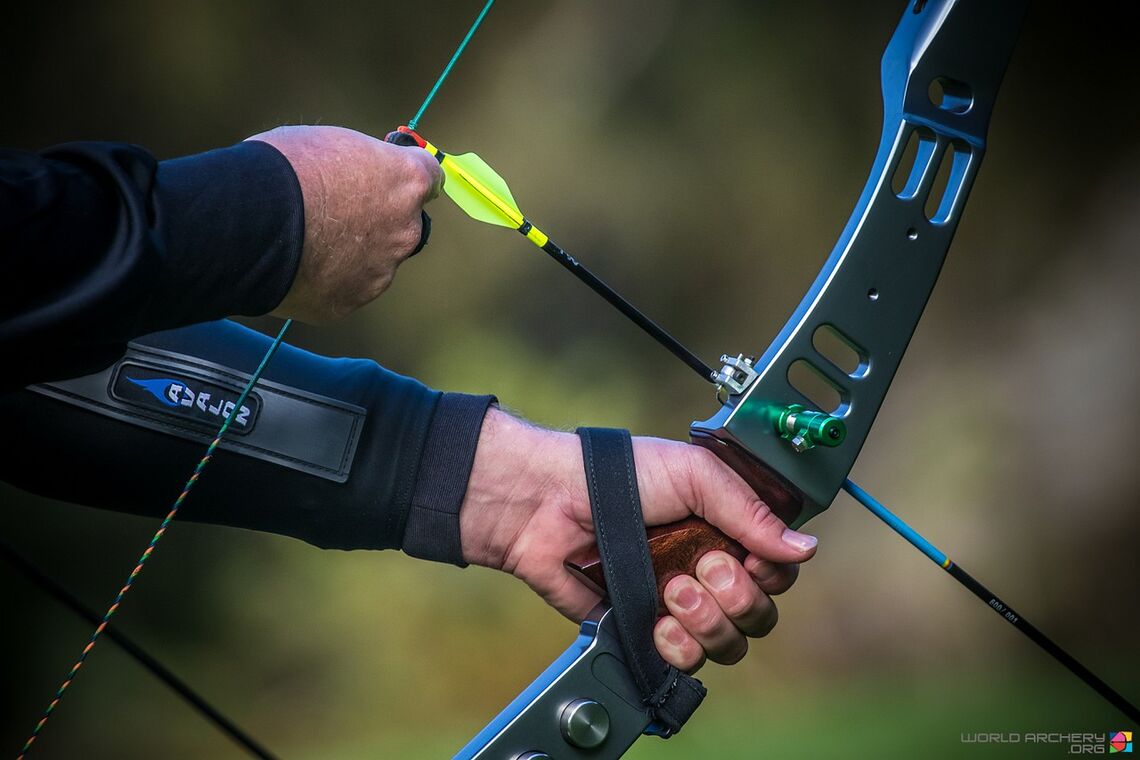
The bottom two seeds in a pool shoot a match, with the loser leaving the competition and the winner advancing to the next match, against the next lowest-seeded athlete in the pool. After four matches only one athlete remains and qualifies to shoot in the semifinals.
(For example: seed 1 beats 2, chooses Pool A; (A) 11 beats 10; (A) 7 beats 10; (A) 7 beats 6; (A); 7 beats 3; semifinal 1 – 1 versus 7; (B) 9 beats 12; (B) 8 beats 9; (B) 5 beats 8; (B) 4 beats 5; semifinal 2 – 2 versus 4.)
The winners of the two semifinals contest the gold final. The two semifinal losers compete for the bronze medal.
Individual matches are decided using cumulative scoring. Each athlete shoots three arrows at each target in a course of six targets in elimination, four in finals. The athlete with the highest total score at the end of the course wins the match.
If there is a tie on score at the end of the course, each athlete shoots a single arrow. The athlete whose arrow lands closest to the middle wins the match.
Favourites
Top fives of archers attending the event picked from the compound world rankings as of 17 July and finishing position at the last World Archery Field Championships, held in Dublin in 2016.
Compound men
- 1. Stephan Hansen, Denmark (World Champion)
- 2. Mike Schloesser, Netherlands
- 3. Reo Wilde, USA (Defending Champion)
- 4. Esmaeil Ebadi, Iran
- 5. Camilo Cardona, Colombia
Compound women
- 1. Sarah Sonnichsen, Denmark
- 2. Sara Lopez, Colombia
- 3. Sarah Prieels, Belgium
- 4. Andrea Marcos, Spain
- 5. Parisa Baratchi, Iran
Compound mixed team
- 1. Denmark
- 2. Colombia
- 3. USA (Defending Champion)
- 4. France
- 5. Mexico
Recurve men
- 1. Brady Ellison, USA (World Champion)
- 2. Sebastien Rohrberg, Germany
- 3. Jean-Charles Valladont, France (Defending Champion)
- 4. Vic Wunderle, USA
- 5. Matija Mihalic, Croatia
Recurve women
- 1. Jessica Tomasi, Italy
- 2. Naomi Folkard, Great Britain (Defending Champion)
- 3. Heather Koehl, USA
- 4. Laurence Baldauff, Austria
- 5. Elin Kattstrom, Sweden
Barebow men
- 1. Erik Jonsson, Sweden (World Champion)
- 2. David Garcia Fernandez, Spain
- 3. Martin Ottosson, Sweden
- 4. Michael Fisher, Australia
- 5. Giuseppe Seimandi, Italy (Defending Champion)
Barebow women
- 1. Chantal Porte, France (World Champion)
- 2. Lina Bjorklund, Sweden (Defending Champion)
- 3. Maruyama Miyuki, Japan
- 4. Martina Mackova, Czech Republic
- 5. Tina Gutman, Slovenia
The archery competitions at the Wroclaw 2017 World Games start on 23 July in Szczytnicki Park


